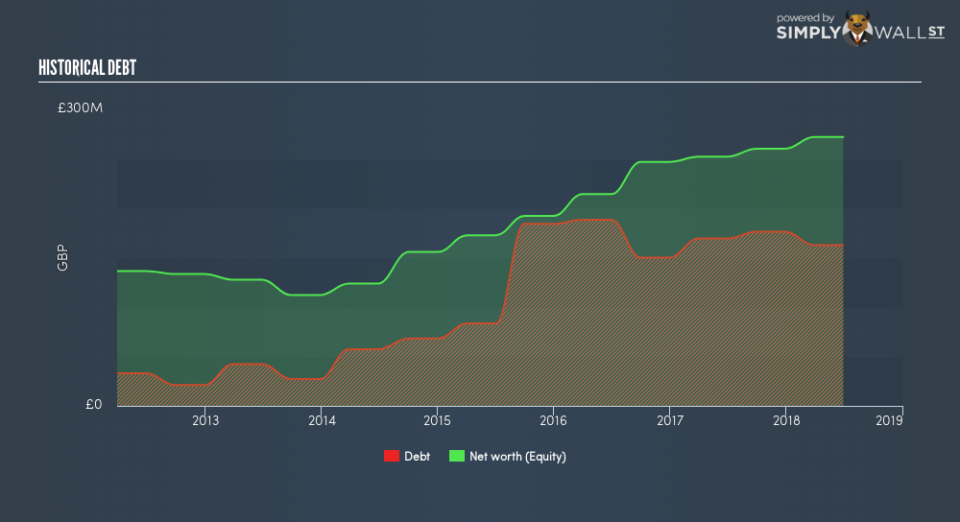What does Impellam Group PLC’s (LON:IPEL) Balance Sheet Tell Us About Its Future?

Investors are always looking for growth in small-cap stocks like Impellam Group PLC (LON:IPEL), with a market cap of UK£280m. However, an important fact which most ignore is: how financially healthy is the business? So, understanding the company’s financial health becomes crucial, since poor capital management may bring about bankruptcies, which occur at a higher rate for small-caps. Here are a few basic checks that are good enough to have a broad overview of the company’s financial strength. Nevertheless, given that I have not delve into the company-specifics, I suggest you dig deeper yourself into IPEL here.
How does IPEL’s operating cash flow stack up against its debt?
IPEL has sustained its debt level by about UK£163m over the last 12 months including long-term debt. At this stable level of debt, IPEL’s cash and short-term investments stands at UK£84m , ready to deploy into the business. Additionally, IPEL has produced UK£44m in operating cash flow during the same period of time, resulting in an operating cash to total debt ratio of 27%, indicating that IPEL’s current level of operating cash is high enough to cover debt. This ratio can also be a sign of operational efficiency as an alternative to return on assets. In IPEL’s case, it is able to generate 0.27x cash from its debt capital.
Can IPEL pay its short-term liabilities?
Looking at IPEL’s UK£625m in current liabilities, the company has been able to meet these commitments with a current assets level of UK£707m, leading to a 1.13x current account ratio. For Professional Services companies, this ratio is within a sensible range since there is a bit of a cash buffer without leaving too much capital in a low-return environment.
Does IPEL face the risk of succumbing to its debt-load?
IPEL is a relatively highly levered company with a debt-to-equity of 60%. This is not unusual for small-caps as debt tends to be a cheaper and faster source of funding for some businesses. We can check to see whether IPEL is able to meet its debt obligations by looking at the net interest coverage ratio. A company generating earnings before interest and tax (EBIT) at least three times its net interest payments is considered financially sound. In IPEL’s, case, the ratio of 6.57x suggests that interest is appropriately covered, which means that debtors may be willing to loan the company more money, giving IPEL ample headroom to grow its debt facilities.
Next Steps:
Although IPEL’s debt level is towards the higher end of the spectrum, its cash flow coverage seems adequate to meet obligations which means its debt is being efficiently utilised. This may mean this is an optimal capital structure for the business, given that it is also meeting its short-term commitment. I admit this is a fairly basic analysis for IPEL’s financial health. Other important fundamentals need to be considered alongside. I recommend you continue to research Impellam Group to get a better picture of the small-cap by looking at:
Future Outlook: What are well-informed industry analysts predicting for IPEL’s future growth? Take a look at our free research report of analyst consensus for IPEL’s outlook.
Valuation: What is IPEL worth today? Is the stock undervalued, even when its growth outlook is factored into its intrinsic value? The intrinsic value infographic in our free research report helps visualize whether IPEL is currently mispriced by the market.
Other High-Performing Stocks: Are there other stocks that provide better prospects with proven track records? Explore our free list of these great stocks here.
To help readers see past the short term volatility of the financial market, we aim to bring you a long-term focused research analysis purely driven by fundamental data. Note that our analysis does not factor in the latest price-sensitive company announcements.
The author is an independent contributor and at the time of publication had no position in the stocks mentioned. For errors that warrant correction please contact the editor at editorial-team@simplywallst.com.

